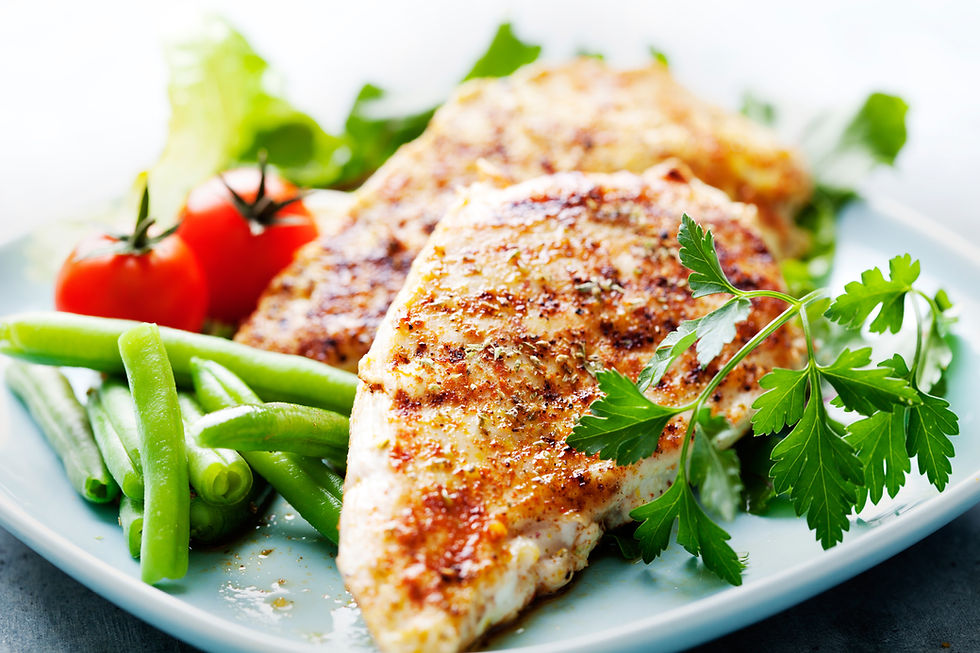Food Stats: Broccoli
- Linked Fit

- Aug 5, 2020
- 3 min read
Updated: Jan 10, 2021
Overview:
Broccoli is a common vegetable and is seen in most, if not all grocery stores. Broccoli is easily prepped for many different meals.
Broccoli gets its name from the Latin word brachium when roughly translates to branches or arms because of its look.
Broccoli comes in a variety of forms with a few differences in their looks.
It is part of the group as Brussels sprouts, kale, and cauliflower.
Originating in Italy, broccoli is typically grown in cooler temperatures around late summer to the fall.
The Look:
Broccoli is notoriously identified by looking like mini trees.
They have a thick edible stalk and a flowery top.
Broccoli is green in color but does come in different hues of greens. Some yellowing at the top is okay.

Nutrition:
All parts of the broccoli are edible and each comes with different nutrients. Broccoli is a great source of fiber. The stalks do contain more fibrous nutrients.
Broccoli also contains vitamins A, C, K, and B9 (folate).
Other minerals include magnesium, manganese, potassium.
Plus, an array of other antioxidants and detoxifying compounds, such as sulforaphane.
Benefits:
Due to the various nutrients within broccoli, broccoli has a list of different benefits.
One serving of broccoli provides can provide about double the recommended about of vitamin C and K. Plus, almost half of the recommended value of vitamin A.
Broccoli has a variety of nutrients that aid gene regulation, cell differentiation, and blood clotting.
The nutrients in broccoli are also very helpful for bone growth and the maintenance of connective tissues.
Plus, they act as an antioxidant, helping with immunity.
With the array of antioxidants, vitamins, and minerals found within broccoli, there are different types of phytochemicals that aid in the prevention of cancer.
The nutrients aid in fluid, electrolyte balances, and other electrical impulses in the body.
But there's more! Great for eye health and vision.
Serving Size:
About 1 cup of broccoli or 100 grams raw is about 40 calories
About 3 grams of protein
About 0.4 grams of fat
About 8 grams of carbohydrates
About 3 grams of fiber
Use & Cooking:
Broccoli can be eaten raw or cooked. For cooking try steaming or roasting. Just make sure to give it a good wash before consuming.
Eat it raw with other veggies as a snack or serve it raw with a dip of choice at your next party.
To roast, turn the oven on to 425 degrees F. Place on a baking sheet with a little bit of olive oil and seasonings of choice. Roast in the oven for about 20 minutes. Roasting adds more texture and flavor to the broccoli.
To steam, fill a saucepan with a little water at the bottom. Place a colander or strainer at the bottom of the pan so the broccoli stays out of the water. Vital nutrients can be lost in the water if submerged.
Be careful not to overcook when steaming the broccoli, this again can lead to a loss of nutrients. Also, broccoli does have a distinct odor but does become a stronger sulfurous smell when overcooked.
When cooked broccoli should be fork-tender, it should not be mushy.
Broccoli can be purchased whole, pre sectioned into florets or even frozen. If you are purchasing whole you might need to trim the stem and section into even florets. You can use a knife or your hands to break up the broccoli.
Cook time is ultimately pretty quick with broccoli, which makes it easy to prep ahead of time or right in the movement.
Storage:
Broccoli will last up to a week in the fridge. To help preserve the freshness store in the fridge, it might be helpful to wrap in a plastic bag.
If you are cutting the broccoli into bite-sized florets, you can again store them pre-cut in a plastic bag in the fridge, or if you plan to eat them within a few hours, store in a small amount of water.
Cooked broccoli will hold up for about 3 days in an airtight container in the fridge.
Since broccoli holds up well it makes it perfect for meal prepping.
Recipes:
Broccoli can be used in a variety of different dishes.
Eaten raw, broccoli can be shaved or sectioned into bite-size florets to be used in salads.
Broccoli is always perfect to add to any stir fry. Check out this Meal Prep Stir Fry for your next dinner!
Even try broccoli as a breakfast veggie. Try this Open Faced Omelet.
Reinhardt, T. (2014). Super Foods (Seconds ed.). Buffalo, NY: Firefly Books Inc.
Sizer, F., Whitney, E. (2011). Nutrition Concepts & Controversies (twelfth ed.). Belmont, CA: Wadsworth










Comments